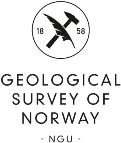
(Last updated: 01.10.2024)

|
Norsk versjon | ||||
| THE INDUSTRIAL MINERAL DATABASE | |||||
| Occurence 3114 - 303 Sandåker | |||||
| (Object Id: 8893) (Last updated: 01.10.2024) |
|||||
|
|
| Location |
| County: | Østfold | Municipality: | Våler (3114) |
| Map 1:50000: | Vannsjø (1913-4) | Map 1:250000: | Oslo |
| Coordinate system: | EU89-UTM Zone 32 | (Coordinates NOT confirmed) |
| East: | 617118 m. | North: | 6592991 m. |
| Longitude: | 11.0663220 | Latitude: | 59.4590810 |
| Show on map |
|
|
| Resource |
| Resource Type: | Feldspar | Resource Subtype: | Pegmatitic feldspar |
| Importance |
| Raw material meaning: | Not Assessed (reg. 18.02.2015) |
Products |
| Element/product | Crude ore grade or quality | Reg. date | |
| Pegmatitic feldspar | % | 15.10.2024 |
Mineralization |
| Genesis: | Form: | |||
| Main texture: | Min. distribution: |
| Main grain size: |
| Strike/Dip: | Direction: | |||
| Plunge: |
| Stratigraphic classification of host rock |
| Era: | Period: |
| Province: | ||
| Geotec.unit: | ||
| Tectonic complex: | ||
| Igneous complex: |
| Group: | Formation: |
Information(s) in free text format |
| Location |
| Bør muligens flyttes til EU89-UTM 32 617280 6592543 sør for Sandåker |
Bibliography: |
| From NGU's Reference Archive: |
| Østmo, Peter P. , 1942 |
| Sandaker glimmerbrudd |
| ;Norges geologiske undersøkelse;RAPPORT;Bergarkivet; No.BA 5786;2 pages |
| , 1943 |
| Sandaker glimmerbrudd. Plankart over brudd og daganlegg 1:1 000. |
| ;Norges geologiske undersøkelse;KART;Bergarkivet; No.K 1171 |
| Hauge, S. , 1945 |
| Sandåker felt. Planskisse over bruddet 1:250. |
| ;Norges geologiske undersøkelse;KART;Bergarkivet; No.K 1178 |
| Rekstad, J. , 1921 |
| Eidsberg. De geologiske forhold innen rektangelkartet Eidsbergs område |
| ;Norges geologiske undersøkelse;KARTBESKRIVELSE; BOK;NGU; No.88;76 pages |
| Abstract: | |
| The territory is situated in south-eastern Norway to the east of the Oslofjord. It is an inland district which at no place reaches the sea. Glomma is the chief river which runs through the country in a southerly direction. The rocks occurring here are gneiss, granite, gabbro and schistose amphibolite, all of them of Archean age. Gneiss occupies a large area of the region. The rock has a varied appearance. Partly it is rich in mica (mica gneiss), partly it contains hornblende (hornblende-gneiss), partly it is coarse-grained and of granitoid texture. This latter form embraces also granite which has been deformed by powerful mechanical forces. This granite is intermixed with the gneiss in such a way as to make it impossible to separate them on the map. For the most part there is no distinctive demarcation between them, but the one passes into the other. The gneiss is mostly stratified, with well defined strike and dip. The granite intermixed is younger than the gneiss, but it belongs to the oldest known granites of Scandinavia. The gneiss is for the most part of igneous origin. Gabbro and amphibolite occur as numerous lenses injected into the gneiss. Connected with the gabbro here occurs nickelferous pyrrhotite. The greatest of these occurrences is at Romsås. |
| The fact sheet was created on 02.01.2026 |
| Questions or comments regarding the fact sheet can be emailed to: ressursdatabaser@ngu.no |
| Copyright © 2026 Geological Survey of Norway |